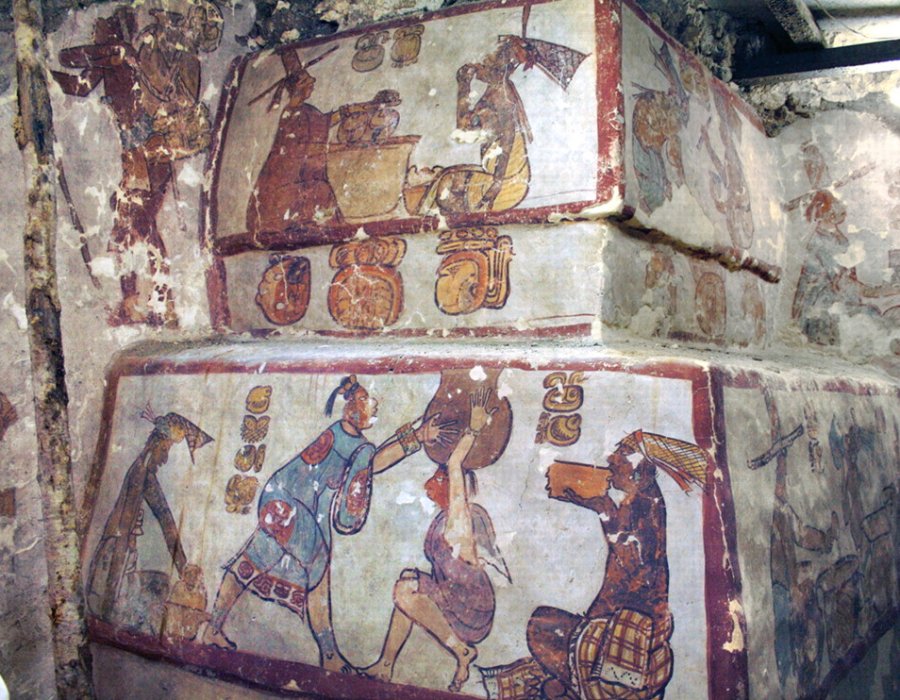Calakmul Was Powerful Ancient Maya Seat Of The Snake Kingdom
A. Sutherland - AncientPages.com - One of the three largest and most important Mayan city-states, next to Tikal (Guatemala) and Palenque, was Calakmul ("City of the Two Adjacent Pyramids"). The ruins of this once-powerful Maya city-state were discovered in the 1930s.
Calakmul is one of the finest representations of the Maya Culture. Credit: Adobe Stock - Jon Ortiz
In the days of splendor, Calakmul was ruled by the dynasty of the Serpents. The city was once the capital of a large regional power in the Classic period in Maya history.
It was also one of two superpowers. The other was - Tikal. For several centuries, Calakmul represented the seat of the Snake Kingdom because of its important snake head dynastic glyph (written now as "Kaan" and pronounced as "chaan").
Today, it is an ancient Maya archaeological site located 35 km (22 miles) from the Guatemala border, surrounded by the jungle of the greater Petén Basin region in the Mexican state of Campeche.
In its center, Calakmul had probably a population of about 50,000 people and was the seat of the Snake (Kaan) Kingdom, of which rulers reigned during most of the Classic period. It has recently been suggested that Dzibanche was their first capital, which was later relocated to the site of Calakmul.
These rulers identified themselves as Divine Lords of the Snake ("k'uhul kaanal ajaw"). Generally, the Mayas did not have expansive military ambitions, but the Lords of the Snake were rather unique. Their first capital was Dzibanche, and from there, they expanded to present-day north Guatemala, Belize, and the Mexican state of Campeche. Still, they were eventually stopped and defeated by the Tikal rulers.
The 1930s surveys mapped Calakmal and recorded 103 stelae (carved, commemorative stone slabs) at the site. It also has a number of very beautiful murals depicting scenes of the Maya inhabitants giving, receiving, and consuming food products, as well as displaying and transporting other goods. The murals of Calakmulare are believed to be the most unique pieces of art that can be found in the Maya world.
The front of the house of the mouth of the snake. Credit: Adobe Stock - ahau1969
Until now, as many as 6250 different ancient structures have been identified at the site, which covers an area of about 2 square kilometers (0.77 sq mi).
Calakmul was probably first established around 600 BC. According to sources, Calakmul's two monumental pyramids were built between 300 BC and 250 AD. One is over 45 meters (148 ft) high, a north-facing structure with a base measuring 120 meters (390 ft) square. The other is 50 meters (165 feet) high and measures over 130 meters (400 feet) in circumference.
Like many temples or pyramids within Mesoamerica, the pyramids at Calakmul were built on earlier pyramidal structures.
Reservoirs And Water Canals Of Calakmul
A wide network of canals and water reservoirs surrounds Calakmul. In the Maya times, Calakmul and its surroundings had the perfect conditions for farming because crops were cultivated near surrounding lowlands known as “bajos” (swamps).
However, it did not mean that Calamul’s inhabitants had enough drinking water; the ancient Maya were a resourceful culture. They constructed “aguadas” to store seasonal rainwater. As many as thirteen such surface reservoirs have been discovered, the largest of which is the structure measuring 242 by 212 meters (794 by 696 feet).
The southeast corner of Structure Sub 1–4 of the Chiik Nahb complex, Calakmul. Credit: Pnas
Calakmul’s sacbes are another interesting idea of the ancient Maya. Eight causeways (sacbe) have been discovered around Calakmul. Two of these have been mapped, three have been identified visually on the ground, and three more identified with remote sensing. The sacbes connected Calakmul with suburban neighboring sites and with other places like El Mirador and El Tintal.
Until recently, not much was known about it. Now, thanks to the work of archaeologists, more and more new facts have come to light. We have to remember that it’s not easy to excavate in this part of the world because of the hot climate and deep, dense jungle that disturb archaeological works.
Updated on November 30, 2023
Written by – A. Sutherland - AncientPages.com Senior Staff Writer
Copyright © AncientPages.com All rights reserved. This material may not be published, broadcast, rewritten or redistributed in whole or part without the express written permission of AncientPages.com
Expand for referencesMore From Ancient Pages
-
 10 Ancient Love Symbols
Ancient Symbols | Jan 5, 2016
10 Ancient Love Symbols
Ancient Symbols | Jan 5, 2016 -
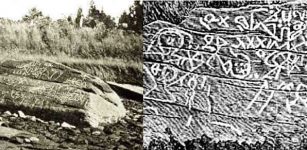 Dighton Rock – Centuries-Old-Mystery Still Unsolved
Featured Stories | Sep 8, 2015
Dighton Rock – Centuries-Old-Mystery Still Unsolved
Featured Stories | Sep 8, 2015 -
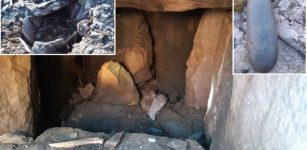 Ancient Bronze Age Tomb With Highly Unusual Features – Discovered On Dingle Peninsula, Ireland
Archaeology | Apr 29, 2021
Ancient Bronze Age Tomb With Highly Unusual Features – Discovered On Dingle Peninsula, Ireland
Archaeology | Apr 29, 2021 -
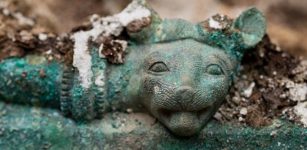 Tomb Of Celtic Prince Has Been Unearthed In France
Archaeology | Mar 5, 2015
Tomb Of Celtic Prince Has Been Unearthed In France
Archaeology | Mar 5, 2015 -
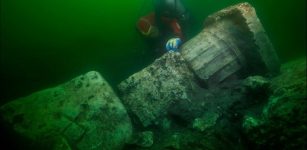 New Discoveries In Underwater Excavations Of Sunken Cities Of Canopus and Heracleion
Archaeology | Jul 29, 2019
New Discoveries In Underwater Excavations Of Sunken Cities Of Canopus and Heracleion
Archaeology | Jul 29, 2019 -
 Identity Of The Shining Ones – One Of The Greatest Secrets Ever Kept From Mankind
Civilizations | Aug 9, 2018
Identity Of The Shining Ones – One Of The Greatest Secrets Ever Kept From Mankind
Civilizations | Aug 9, 2018 -
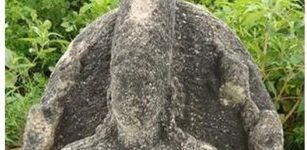 8th Century Sculpture Of Lord Vishnu Belonging To Pandya Dynasty – Unearthed
Archaeology | Sep 16, 2020
8th Century Sculpture Of Lord Vishnu Belonging To Pandya Dynasty – Unearthed
Archaeology | Sep 16, 2020 -
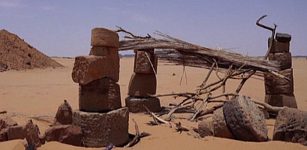 Illegal Gold-Hunting Diggers Damaged Sudan’s 2,000-Year-Old Historic Site
Archaeology | Aug 24, 2020
Illegal Gold-Hunting Diggers Damaged Sudan’s 2,000-Year-Old Historic Site
Archaeology | Aug 24, 2020 -
 Lost Biblical City, Ancient Treasure And Atlantis – Biblical And Archaeological Perspective
Biblical Mysteries | Apr 27, 2018
Lost Biblical City, Ancient Treasure And Atlantis – Biblical And Archaeological Perspective
Biblical Mysteries | Apr 27, 2018 -
 Strange Mist, Unexplained Vanishings And Other Bizarre Incidents – What Is The Connection?
Featured Stories | Mar 8, 2019
Strange Mist, Unexplained Vanishings And Other Bizarre Incidents – What Is The Connection?
Featured Stories | Mar 8, 2019 -
 10 Surprising Facts About The Neanderthals Who Were Not As Primitive As Previously Thought
Ancient History Facts | May 6, 2017
10 Surprising Facts About The Neanderthals Who Were Not As Primitive As Previously Thought
Ancient History Facts | May 6, 2017 -
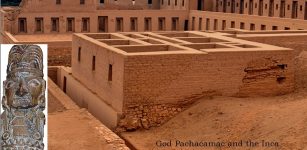 Pre-Columbian Pachacamac Site Dedicated To God Of Creation, Fire And Earthquakes In Inca Religion
Featured Stories | May 31, 2018
Pre-Columbian Pachacamac Site Dedicated To God Of Creation, Fire And Earthquakes In Inca Religion
Featured Stories | May 31, 2018 -
 Anundshög Burial Mound: One Of Sweden’s Richest And Largest Sacred Ancient Sites
Featured Stories | Aug 29, 2018
Anundshög Burial Mound: One Of Sweden’s Richest And Largest Sacred Ancient Sites
Featured Stories | Aug 29, 2018 -
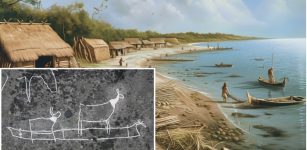 Pitted Ware Culture – Neolithic Scandinavians Used Skin Boats To Trade And Travel Across Large Distances
Archaeology | Sep 11, 2024
Pitted Ware Culture – Neolithic Scandinavians Used Skin Boats To Trade And Travel Across Large Distances
Archaeology | Sep 11, 2024 -
 Mystery Of The Hidden Wooden Hieroglyphic Tablets And The Unknown White Bearded Men – The Civilization That Died Twice – Part 2
Civilizations | Mar 6, 2021
Mystery Of The Hidden Wooden Hieroglyphic Tablets And The Unknown White Bearded Men – The Civilization That Died Twice – Part 2
Civilizations | Mar 6, 2021 -
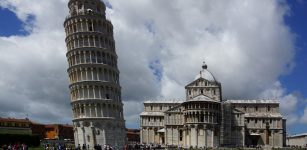 Why Has The Leaning Tower Of Pisa Survived Strong Earthquakes Since The Middle Ages?
Archaeology | May 10, 2018
Why Has The Leaning Tower Of Pisa Survived Strong Earthquakes Since The Middle Ages?
Archaeology | May 10, 2018 -
 Galileo Galilei Wrote A Controversial Astronomical Treatise Using A Pseudonym
News | Oct 6, 2022
Galileo Galilei Wrote A Controversial Astronomical Treatise Using A Pseudonym
News | Oct 6, 2022 -
 Bizarre Meat-Eating Dinosaur Found In Classic Fossil Site In Egypt’s Sahara Desert
Archaeology | Jun 9, 2022
Bizarre Meat-Eating Dinosaur Found In Classic Fossil Site In Egypt’s Sahara Desert
Archaeology | Jun 9, 2022 -
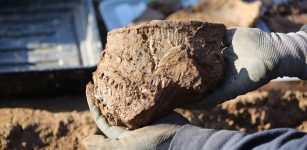 Bronze Age Finding Offer New Clues On The Beginnings Of Cardiff
Archaeology | Jul 15, 2022
Bronze Age Finding Offer New Clues On The Beginnings Of Cardiff
Archaeology | Jul 15, 2022 -
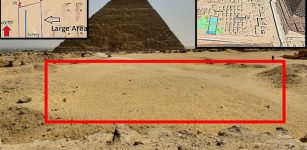 Anomalies Linked To L-Shaped Structure Detected At The Western Cemetery, Giza, Egypt
Archaeology | May 11, 2024
Anomalies Linked To L-Shaped Structure Detected At The Western Cemetery, Giza, Egypt
Archaeology | May 11, 2024



